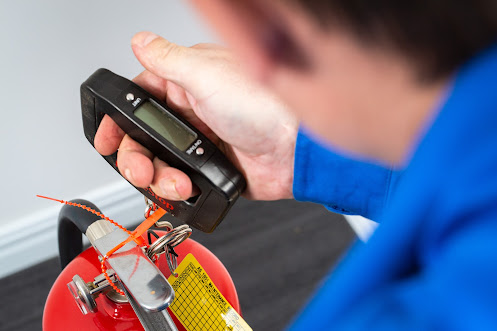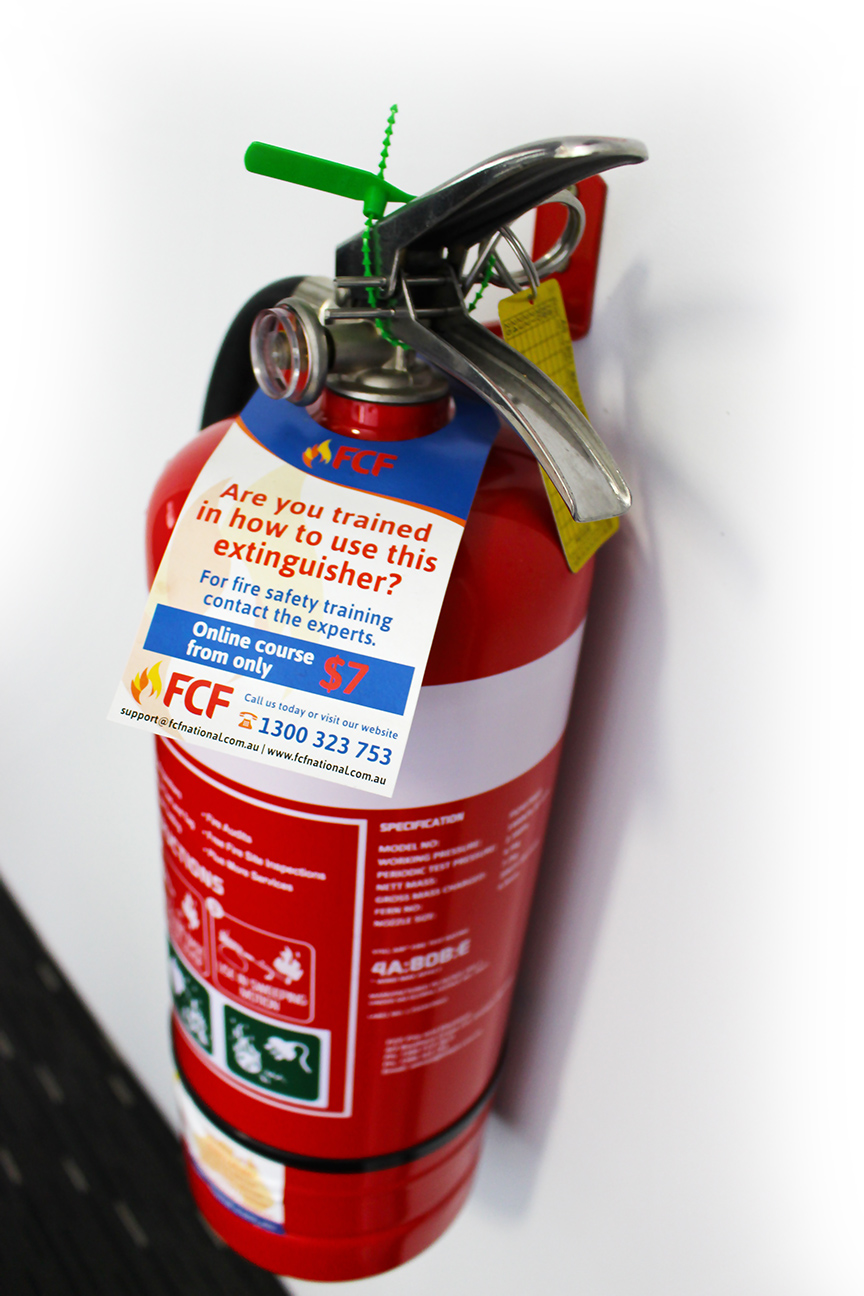Australia, with its diverse landscapes and bustling urban centers, underscores the critical importance of fire safety measures. Among the frontline defenders in the battle against flames are fire extinguishers, crucial tools that demand meticulous testing to ensure their efficacy. This comprehensive exploration delves into the nuances of fire extinguisher testing in Australia, aligning with the stringent standards set forth by authorities. From visual inspections to hydrostatic testing, understanding the protocols ensures that these vital safety instruments stand ready for action when seconds count.
Australian Standards for Fire Extinguisher Testing
In the realm of fire safety, adherence to standards is paramount. Australia, through its regulatory framework, provides clear guidelines for the testing and maintenance of fire extinguishers. The key standard that governs these practices is AS 1851-2012, known as the "Routine service of fire protection systems and equipment." This standard, developed by Standards Australia, offers comprehensive directives for the routine service of fire protection equipment, including fire extinguishers.
Types of Fire Extinguisher Testing in Australia
Fire Extinguisher Testing in Australia: Upholding Safety Standards for Emergency Preparedness. Commencing with a visual inspection, this fundamental test ensures that fire extinguishers are readily accessible and free from visible damage. AS 1851-2012 mandates regular visual checks to confirm that extinguishers are in their designated locations and have not been tampered with.
Fire Extinguisher Testing in Australia: Upholding Safety Standards for Emergency Preparedness
Monthly functional tests are a hands-on assessment of the fire extinguisher's operational capabilities. While brief, these tests are integral to verifying that the extinguisher can discharge its contents effectively, providing a practical check of its readiness for emergencies.
Fire Extinguisher Testing in Australia: Upholding Safety Standards for Emergency Preparedness. An annual professional inspection, in alignment with AS 1851-2012, involves a comprehensive examination conducted by qualified technicians. This inspection delves into internal components, pressure levels, and overall compliance with Australian standards.
Hydrostatic Testing: For certain types of fire extinguishers, hydrostatic testing is a critical component of the maintenance regimen. AS 1851-2012 outlines the frequency and procedures for hydrostatic testing, ensuring the structural integrity of extinguishers through pressurized assessments.
Recharging: AS 1851-2012 also provides guidelines for the recharging of fire extinguishers, a necessary step after any use or during testing. Recharging is a specialized process that should be performed by trained professionals to ensure the correct type and amount of extinguishing agent is utilized.
Testing Frequency and Compliance Guidelines
- Monthly Visual Inspections: AS 1851-2012 mandates monthly visual inspections by building occupants or designated personnel. During these checks, individuals ensure that extinguishers are in their designated locations, undamaged, and have the correct pressure levels.
- Monthly Functional Tests: Monthly functional tests, while succinct, are instrumental in confirming the operational readiness of fire extinguishers. This routine hands-on check provides a practical assessment of the extinguisher's ability to discharge its contents.
- Annual Professional Inspections: The annual professional inspection, conducted by qualified technicians, encompasses a thorough examination of internal components, pressure verification, and an overall assessment of compliance with Australian standards.
- Hydrostatic Testing: AS 1851-2012 delineates the frequency of hydrostatic testing, emphasizing the importance of this procedure in maintaining the structural integrity of fire extinguishers. The intervals for testing vary based on the type of extinguisher and its construction materials.
The Crucial Role of Fire Extinguisher Testing in Australia
Upholding Reliability in Emergencies: By adhering to the prescribed testing protocols, fire extinguishers in Australia remain reliable in critical moments. In emergency situations, the reliability of these tools can make the crucial difference between containment and escalation.
Ensuring Compliance with Regulations: Compliance with Australian standards is not merely a recommendation; it is a legal obligation. Routine testing and professional inspections are essential components of meeting these regulatory requirements, ensuring the safety of occupants and property.
Extending the Lifespan of Extinguishers: Proper testing and maintenance contribute significantly to extending the lifespan of fire extinguishers. Regular checks and prompt resolution of issues prevent premature wear and tear, ensuring the longevity of these vital safety instruments.
Preventing Malfunctions: Routine testing acts as a proactive measure, identifying and addressing potential malfunctions or issues with fire extinguishers before they escalate. Clogged nozzles, leaking seals, or damaged pressure gauges can be rectified promptly.
Professional Inspections under AS 1851-2012: A Comprehensive Approach
Qualified Technicians: AS 1851-2012 emphasizes that professional inspections should be conducted by qualified technicians with the requisite expertise in fire safety equipment. These technicians are trained to assess various types of fire extinguishers and identify potential issues that may not be visible during routine inspections.
Internal Examination: The professional inspection entails a meticulous internal examination of the fire extinguisher. Technicians assess internal components, ensuring the free flow of extinguishing agent and evaluating the overall integrity of the extinguisher.
Pressure Verification: Pressure verification is a critical aspect of the professional inspection process. Technicians verify pressure levels to ensure they fall within the specified range, as incorrect pressure can significantly impact the effectiveness of the extinguisher.
Compliance with Standards:
The professional inspection ensures that fire extinguishers comply with the relevant Australian standards. This includes confirming that the extinguisher meets the requirements for its type, intended use, and construction.
Documentation: After a professional inspection, technicians provide comprehensive documentation detailing the results of the inspection. This documentation serves as a crucial record for compliance purposes and as a reference for future inspections.
Hydrostatic Testing: Ensuring Structural Integrity
Frequency of Hydrostatic Testing: AS 1851-2012 specifies the frequency of hydrostatic testing based on the type of fire extinguisher and its construction materials. This procedure, conducted every five to 12 years, involves subjecting the extinguisher to high pressure to assess its structural integrity.
Procedure: Hydrostatic testing is a meticulous process outlined by AS 1851-2012. It involves filling the extinguisher with water or another liquid and subjecting it to high pressure, simulating the conditions it may encounter during use. This test is crucial for ensuring the continued safety and effectiveness of the extinguisher.
Material-Specific Testing: Different materials used in the construction of fire extinguishers have specific requirements for hydrostatic testing. Technicians must adhere to these specifications to guarantee the safety and efficacy of the extinguisher.
Compliance and Certification: Hydrostatic testing should be conducted by certified professionals in compliance with AS 1851-2012. After testing, the extinguisher is typically labeled to indicate that it has undergone hydrostatic testing and is safe for use.
The Importance of Biannual Testing by Fire Safety Professionals
Australia acknowledges the critical role of fire extinguisher testing by stipulating that such tests must be conducted every six months by a qualified fire safety professional. This biannual testing schedule ensures a more frequent and vigilant examination of fire extinguishers, minimizing the risk of potential malfunctions and enhancing their responsiveness during emergencies.
AS 1851-2012, the cornerstone of fire safety standards in Australia, aligns with this biannual testing frequency. The standard not only sets out the rules and regulations for fire extinguisher testing but also underscores the necessity of a proactive approach to maintenance. Building owners, entrusted with the safety of occupants, are thus compelled to engage in regular testing to guarantee compliance with national safety standards and Australian law.
Incorporating Biannual Testing into the Safety Plan
Biannual Professional Testing:
Engaging fire safety professionals for biannual testing adds an extra layer of assurance. These experts bring specialized knowledge and experience to ensure that fire extinguishers are not just meeting minimum standards but are prepared to exceed them.
Enhanced Vigilance:
Biannual testing introduces enhanced vigilance into fire safety protocols. More frequent assessments mean that any issues or discrepancies can be identified and addressed promptly, minimizing downtime and maximizing the operational readiness of fire extinguishers.
Compliance with Legal Obligations:
Australian law mandates compliance with fire safety standards, making biannual testing not just a best practice but a legal obligation. Building owners who adhere to this testing frequency demonstrate a commitment to the safety and well-being of all occupants.
Conclusion: A Commitment to Safety
In conclusion, fire extinguisher testing in Australia is not merely a regulatory requirement; it is a commitment to the safety of individuals and the protection of property. Adhering to the rigorous standards outlined by AS 1851-2012 ensures that fire extinguishers are not dormant sentinels but active defenders, always ready to confront the unpredictable nature of fire emergencies. Through routine testing, professional inspections, and a dedication to compliance, Australia stands fortified in its resolve to uphold the highest standards of fire safety. In the realm of fire protection, preparation is not just a concept; it is a lifeline, and fire extinguisher testing is the steadfast guardian of that lifeline. You may also check Mackay Fire Extinguisher Inspection.



Comments
Post a Comment